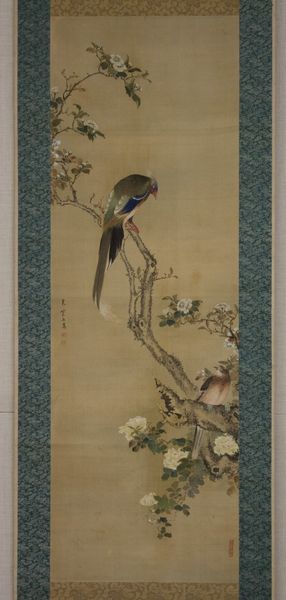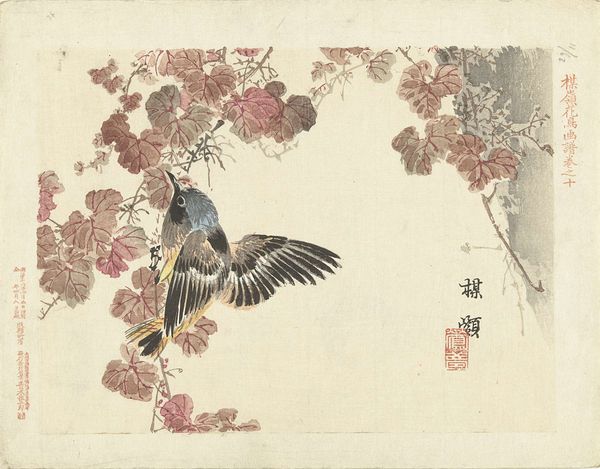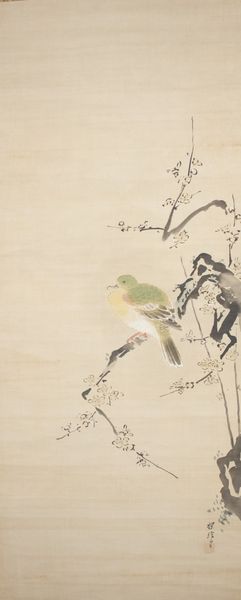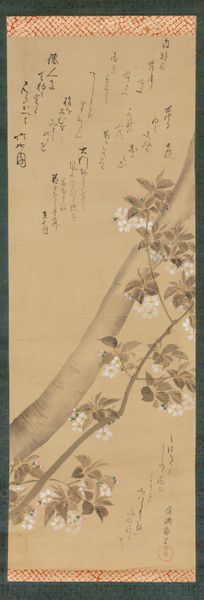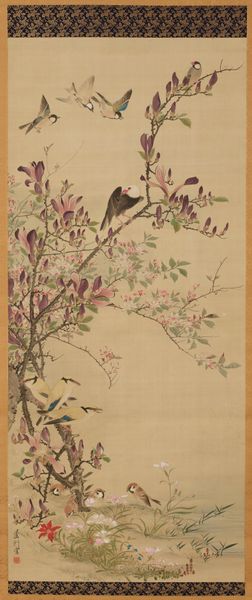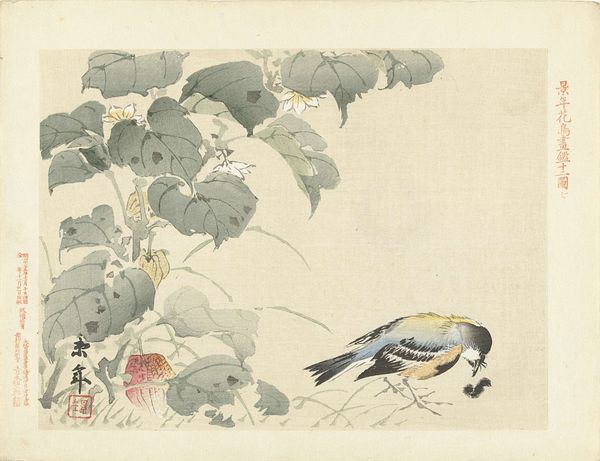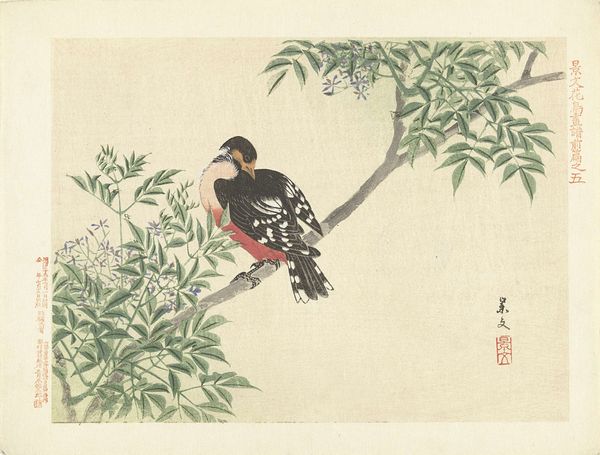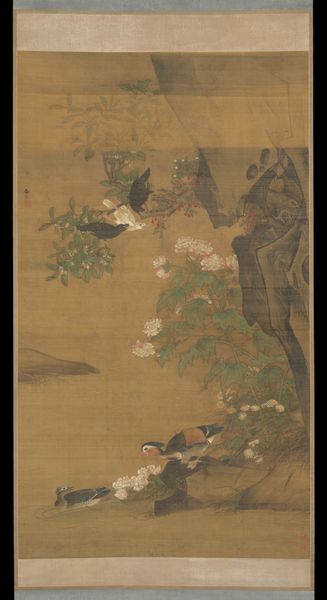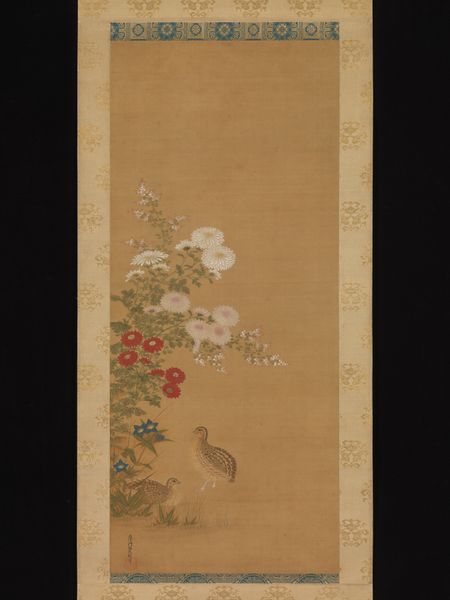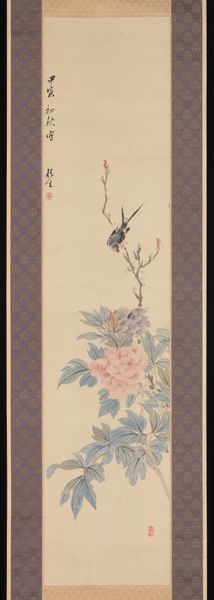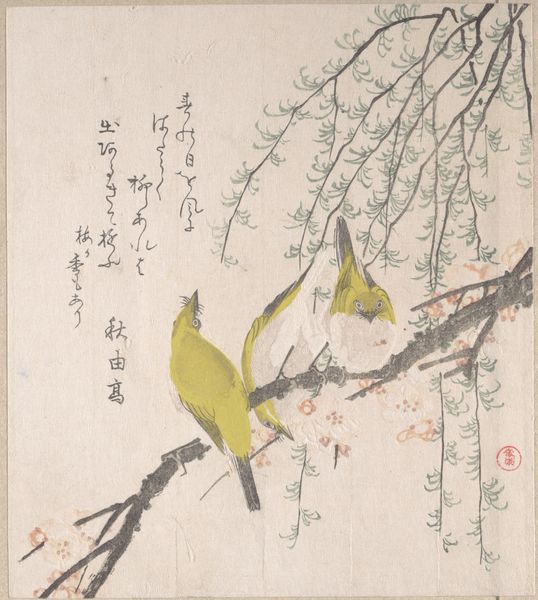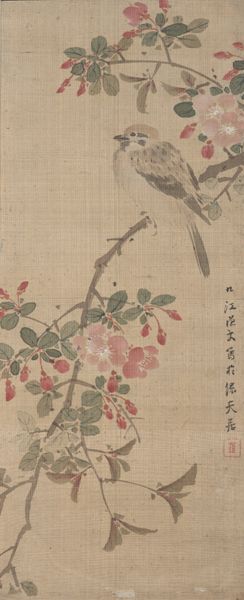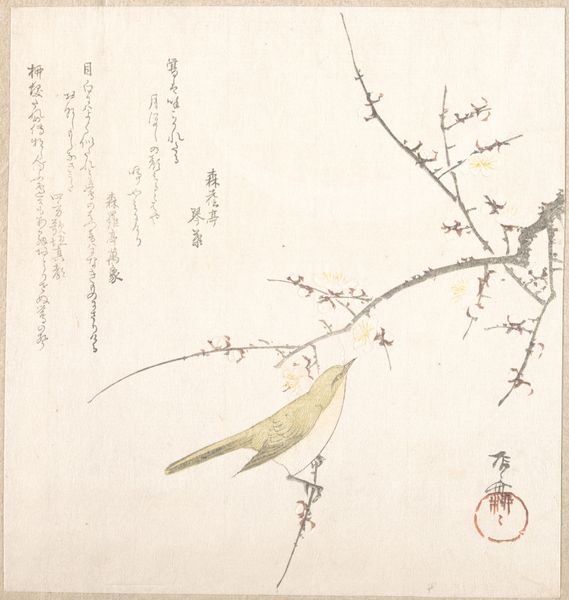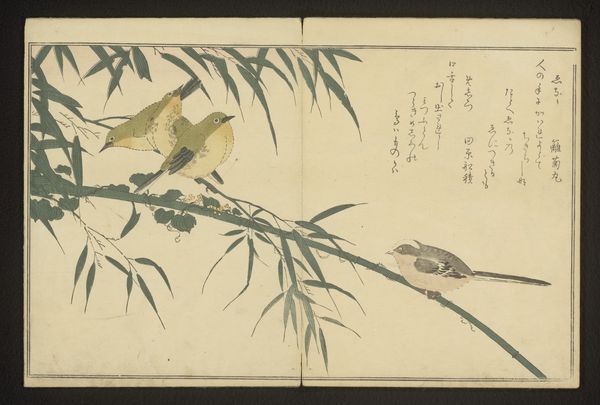
painting, watercolor
#
painting
#
asian-art
#
bird
#
flower
#
ukiyo-e
#
watercolor
#
watercolor
Dimensions: 11 7/16 x 16 3/4 in. (29 x 42.5 cm)
Copyright: Public Domain
Curator: Here we have "Album of Copies of Chinese Paintings" by Kano Tsunenobu, created sometime between 1636 and 1699. It's currently held at the Metropolitan Museum of Art. Editor: First thing I notice? That bird is the chillest dude. Totally zen. The composition, it’s minimal, sparse almost, really calming. Curator: Well, this album exemplifies the Kano school's synthesis of Chinese painting techniques and styles with Japanese aesthetics. Remember, Tsunenobu was a leading figure. His work had a profound impact on Japanese art and how Chinese art was received. Editor: Chinese influences, gotcha. Still, look at how delicately he renders the feathers, those barely-there cherry blossoms. The colours, too - subdued, pastel-like - it’s a gentle breeze in a painting. Curator: Precisely! The Kano school emphasized formal training and copying of masterpieces, a method aimed at mastering technique. This was very important for maintaining the status quo. Note how the emphasis wasn't just on representation but on conveying moral and cultural values. Editor: I suppose that bird, perched so serenely among the blossoms, symbolizes peace and harmony. Funny, thinking about artistic schools copying each other - it all sounds rather academic, doesn’t it? But then, you look at something like this, and you feel like whatever process, the resulting image contains something magical. It is a visual haiku! Curator: Indeed. Consider this piece as an articulation of cultural dialogue and artistic adaptation, reflective of a period grappling with its identity amidst strong external cultural forces. The aesthetic value can never be divorced from those contextual layers. Editor: And maybe that’s why that serene bird resonates with me. Not just a pretty picture, but a quiet conversation about history, art, and ultimately, who we are. It has to be more than just a document if we feel it, right? Curator: I agree. It serves as a powerful reminder of art’s role in shaping, reflecting, and influencing the flow of cultural exchange. Editor: Well said! And next time I want some Zen, I know exactly where to come.
Comments
No comments
Be the first to comment and join the conversation on the ultimate creative platform.
